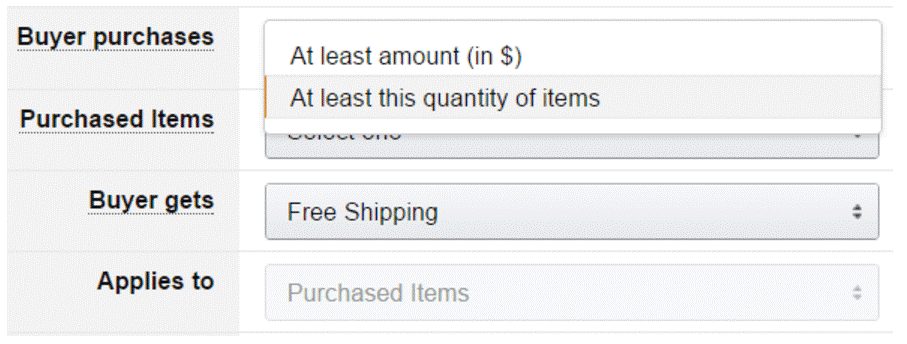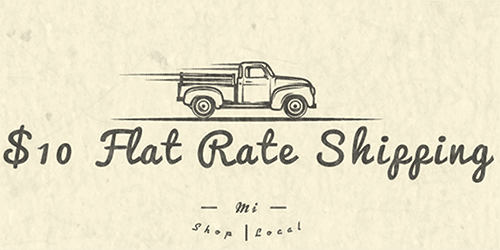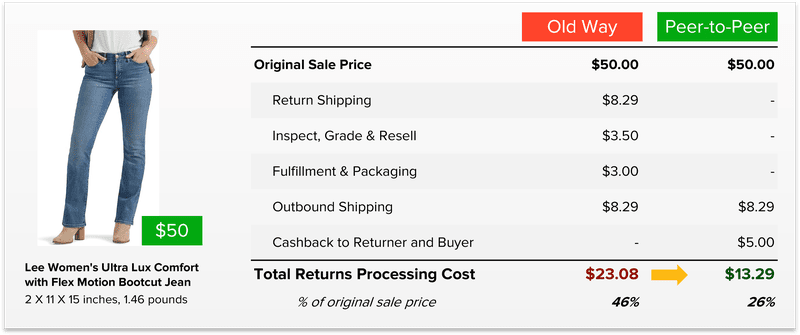Top 5 Pricing Strategies For Making Free Shipping Profitable

Last updated on March 14, 2025

Pricing is one of the most determining factors of a customer’s buying decision. While customers naturally gravitate towards the lowest price, this expectation is now the norm thanks to marketplaces placing a high importance on low final prices (which includes the list price and shipping cost). If you look at any product page in Amazon, very likely the Seller who has the Buy Box also has the cheapest offer. This price expectation puts pressure on online Sellers to set a “just right” price that is both low, but low enough to cover free shipping. As a result the cost of shipping is an important component of online product pricing.
In this article, we will talk about five ways to recover your shipping costs using strategic pricing strategies:
1. Include Shipping Costs in Product Prices
Remember the last time you were irritated about hidden resort fees during hotel checkout? Or that mysterious additional tax you didn’t know about when traveling to a new city? Similarly, customers perceive a surprise shipping charge negatively, which might lead to cart abandonment.
However, the shipping cost is an inseparable part of selling online. There should be no reason to treat this cost separately. What if you included the shipping cost in the price of the item?
Imagine having to pick between these two options for something you’re about to buy:
- Option 1: $30 + $5 shipping charge
- Option 2: $35 with free shipping
Bill DAlessandro, from consulting firm Rebel CEO, ran this very test for a skincare product and found that including shipping in the product cost (Option 2) converted twice as many shopping carts. Several other studies have shown that customers are more likely to abandon the shopping cart when they see a shipping charge added during checkout, the top reason by more than 2-fold!
How do you distribute shipping costs to individual item prices? One approach is to change the pricing of items below your free shipping threshold to include a portion of the expected shipping cost.
Say a merchant offers free shipping for orders of $50 or more, and the average shipping cost is $5. Start by converting your sale price to a percentage of the free shipping threshold, and then add that percentage of the average shipping cost to the item price. For example, a $25 item is 50% of the $50 free shipping threshold, so add 50% of the shipping cost to the item price ($2.50), for a new sale price of $27.50. Similarly, a $10 item is 20% of the $50 free shipping threshold, so add 20% of the shipping cost to the item price ($1.00), for a new sale price of $11.00.
The advantages of including shipping costs in the product price are:
There are other factors that you might want to keep in mind before using this method:
2. Offer Free Shipping on Select Items Only
It is tough to offer free shipping for your entire product catalog when you sell everything under the sun, big or small. But you can thoughtfully select which items to offer with free shipping.
It is often the items with low-margins, heavy-weight, and big-size that suffer losses from shipping costs. This should not stop you from providing your customer with free shipping on higher-margin items where the shipping cost is not a big chunk of the product price.
The key is communicating it effectively to the customer. Being clear and upfront about such restrictions will help customers navigate your page easily and with trust. Here’s an example that Neil Patel demonstrates in this blog where the Seller offers free shipping on all footwear SKUs:

Source: https://neilpatel.com/blog/make-free-shipping-profitable/
A more subtle way to offering free shipping on specific products is setting a free shipping threshold that meets exactly the item you plan to offer free shipping. For example, if your website sells shoes starting at $75 and socks starting at $12; setting free shipping at $75 allows you to offer free shipping to anyone who buy at least 1 pair of shoes, but will only offer free shipping if someone orders 7 pairs of only $12 socks.
He goes on to show how there is a marked improvement in net profits with this experiment despite a reduction in margin per SKU. The increase in sales yields more revenue and higher overall profitability.
Offering free shipping on a limited SKU selection has its benefits:
Keep in mind these few things while implementing this shipping strategy:
3. Enable Free Shipping on Large Orders
Setting a minimum order value to unlock free shipping increases your revenue, creating the margin needed to recover your shipping costs. But this shipping strategy does not work for everyone.
Publishing a minimum order value encourages customers to target a particular shopping cart subtotal such as $50. But if you have a limited product catalog, the customer may abandon the purchase because they cannot find additional relevant items to purchase. In this case, it may be easier to nudge them with a prompt that says, “free shipping when you buy 3 or more”, targeting an order quantity rather than an order subtotal. It may sound silly, but not all customers would think of increasing the item quantity to achieve the free shipping threshold.

It works best for consumables that customers regularly buy, like personal care or household items. For these products, customers are used to expecting savings when buying in bulk. The end goal is similar to the minimum order value in that the merchant can increase the average order value and ship the items together to decrease the shipping costs.
The advantages of bulk/quantity-based free shipping offers are:
A possible hindrance to something like this would be:
4. Introduce Flat Rate Shipping
If for some reason it is not possible to include shipping costs in your product prices, there is still a way to manage customer expectations. Customers will have less anxiety about shipping charges if they know the flat rate shipping cost upfront, regardless of how much they spend.
Online shoppers must take into account many factors when deciding on a purchase. Making the shipping cost clear and simple will make the shopping experience easier, and customers respect the transparency.
You should consider your average margin per unit and average shipping cost to calculate a profitable flat rate to charge. Here’s an example of an online Seller advertising flat rate shipping very effectively: “We don’t want our customers to experience sticker shock when they see the shipping rates at our store. Also, we want to make our online shopping experience straightforward and having a $10 Flat Rate Shipping charge lets customers quickly calculate their costs. That can’t be a bad thing, right?”

Source: https://www.giftbasketsfrommichigan.com/blog/gift-baskets/everyday-10-flat-rate-shipping
There are many flat rate services to choose from (size and weight restrictions apply):
- FedEx One Rate has several options for overnight and 2-day flat rate shipping, depending on what time of day the package needs to be delivered. Pricing depends on the size of the package (dimensions) and how far it’s traveling (there are 3 zones defined). FedEx offers free packaging included with each service, which is a nice perk to keep cost down.
- UPS Simple Rate has more flexible shipping speeds accommodating next day, 2-day, 3-day, and 5-day transit times that in both air and ground services. There are no zones defined by UPS, so one rate is truly one rate, and a packaging subsidy is available for UPS Digital Connections members.
- USPS Priority Mail Flat Rate delivers within 1 – 3 days, though it’s not guaranteed like FedEx and UPS flat rate services are, and only considers a single zone like UPS. Rates are cheaper when purchased using an online solution as compared to purchasing at a post office window, and Flat Rate boxes and mailers come in the widest variety of sizes and are free for shippers.
Some of the advantages of flat-rate shipping are:
You should be careful about the following:
5. Adopt a Dynamic Shipping Charge
Customers may sometimes find your competition is offering the same items at lower prices. But in some cases, your warehouse may be closer to the customer allowing you to ship faster and cheaper than the competition, creating the opportunity to leverage your proximity by offering a more attractive shipping option.
To adopt a dynamic shipping price strategy, ask the customer for their zip code during checkout and use it to determine your actual cost and transit time using real-time rate shopping across all your carriers and services.
Maybe you want to determine if free shipping should be offered or not. Perhaps it’s used as a surprise and the enchanted customer feels that they’ve won something, increasing conversion rates.
Typically ecommerce Sellers calculate shipping charges using the average shipping rate for all their sales, a combination of different zones, sizes, and weights. So, some customers pay more than they should for shipping while others pay less. If the shipping charge imposed on the customer is higher than other Sellers, because of the kind of item you ship (heavier, larger, for example), your cart abandonment rate will be higher.
By collecting the zip code, there is an opportunity to charge the customer the shipping fee tailored to them, encouraging them to buy from you. You can get real-time estimates of shipping rates right from your shipping solution or Order Management System (OMS) by connecting it to the checkout page. This approach also ensures that your shipping cost is covered, effectively taking it out of the equation.
This blog by Squarespace explains one way to do it in great detail, including how to add a markup to create a profit center from your exceptional negotiated rates.

Source: https://support.squarespace.com/hc/en-us/articles/213022907-Carrier-calculated-shipping
The big benefits of having this system are:
There are repercussions to imposing a dynamic shipping charge:
Summary
The reality of modern ecommerce is that free shipping is no longer a luxury, it’s an expectation. But it doesn’t have to be a burden on your bottom line. By integrating shipping costs into your pricing strategy, selectively offering free shipping, or using dynamic pricing models, you can create an approach that aligns with customer expectations while keeping your business financially healthy. The key is to experiment, track results, and adjust as necessary…what works for one business may not work for another. When done right, free shipping can become a powerful conversion tool that boosts sales, improves customer loyalty, and ultimately drives long-term profitability.
Download The Ultimate Guide to Profitable Free Shipping
Frequently Asked Questions
How to price for free shipping?
If the average shipping cost is $5 per order, that means you would lose $5 each time you provided free shipping. If, however, you increase product prices by 20% so the average product price is $10 or more, you can offset the cost of shipping on an average order.
Does offering free shipping increase sales?
Yes, offering free shipping can increase sales. Numerous studies show that free shipping is a key factor in purchasing decisions.
How do retailers afford free shipping?
Some merchants ask customers to cover shipping expense on smaller, lower margin orders. Shoppers are incented to buy more, since additional items ship for free. As the order size increases, overall gross margin goes up, covering the incremental shipping cost increase. Another option is to include shipping costs in product prices.
What is a good free shipping threshold?
Knowing how much an average customer spends per transaction can provide a better idea of what a business’ minimum order value for free shipping should be. A free shipping threshold should be slightly (about 30%) above the average order value to encourage customers to add more items to their cart.
How to offer free shipping without losing money?
The simplest way to make free shipping work for your shop is to price your items to include the shipping cost in the item list price. You can choose to offer free shipping to buyers only located in your country, or to all buyers around the world based on your shop’s needs and customer demographics.

Up to 64% Lower Returns Processing Cost


 13 minutes
13 minutes